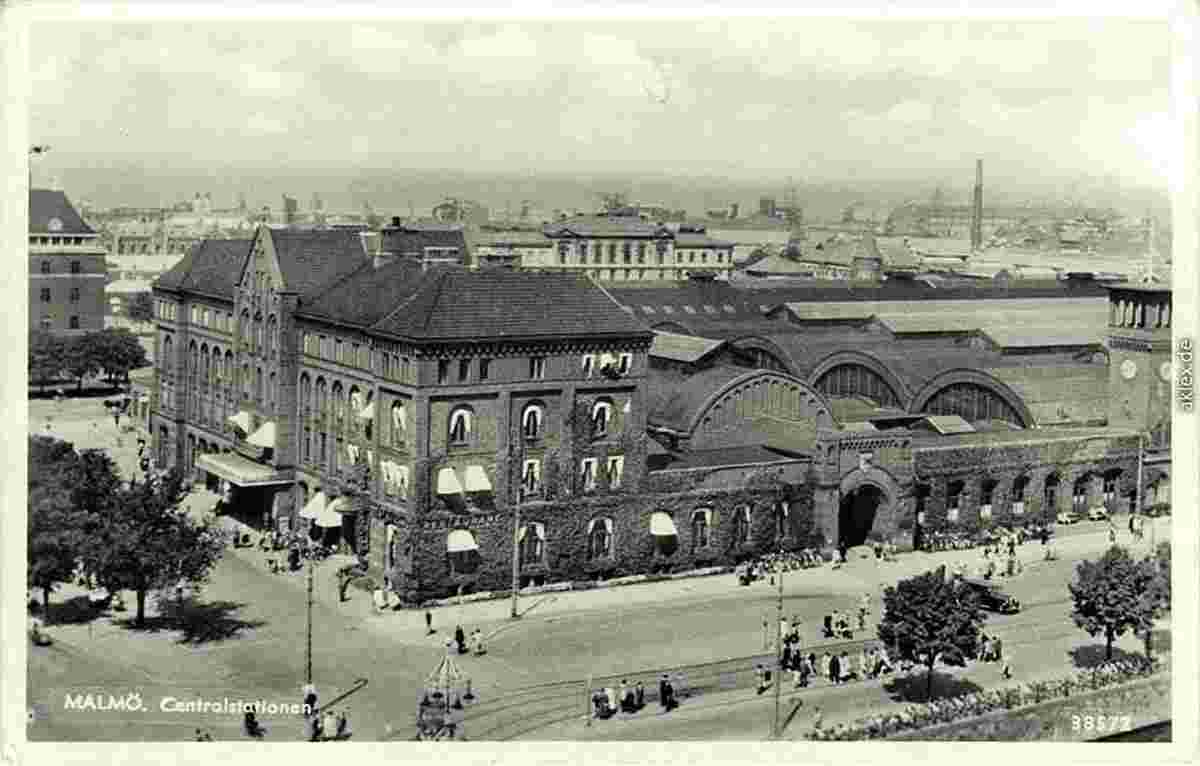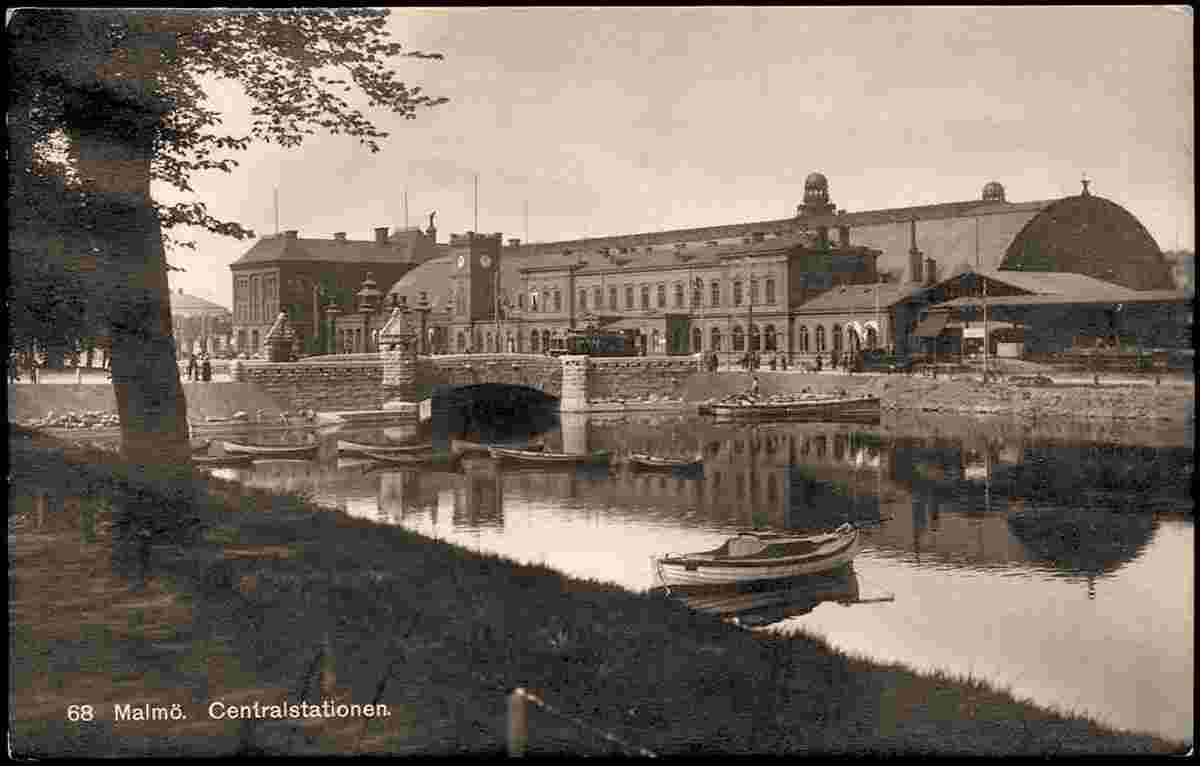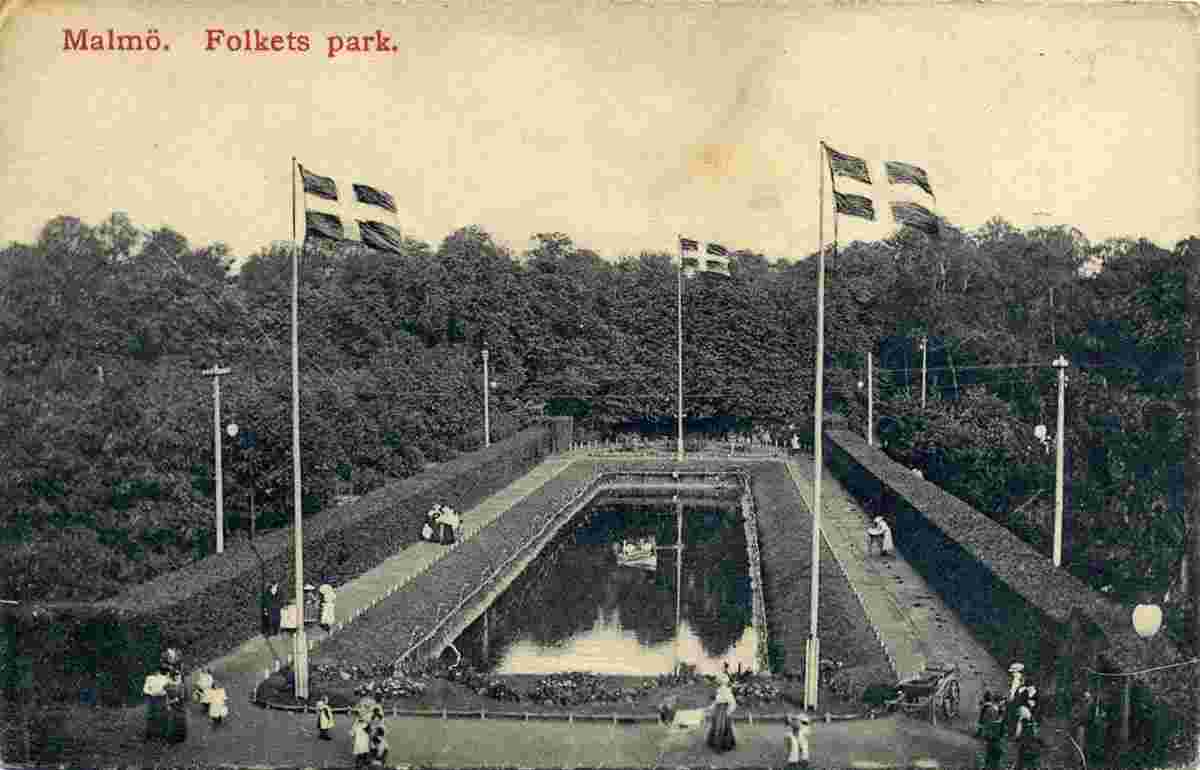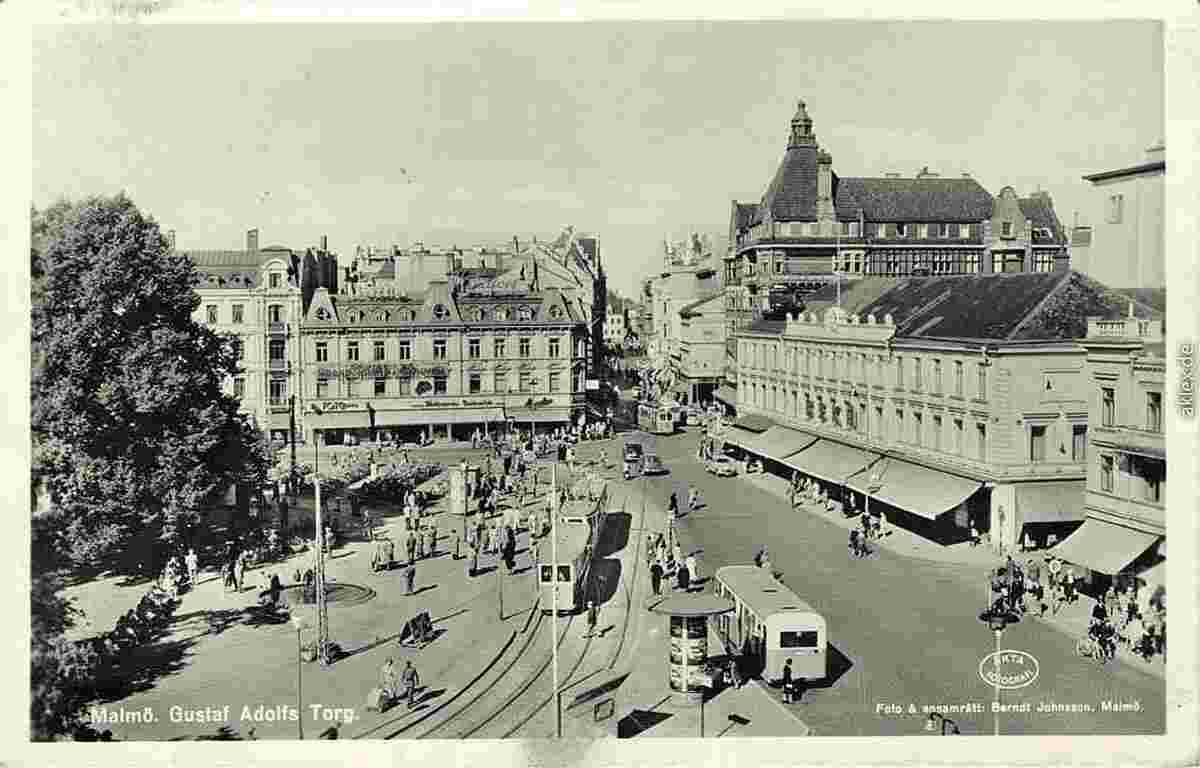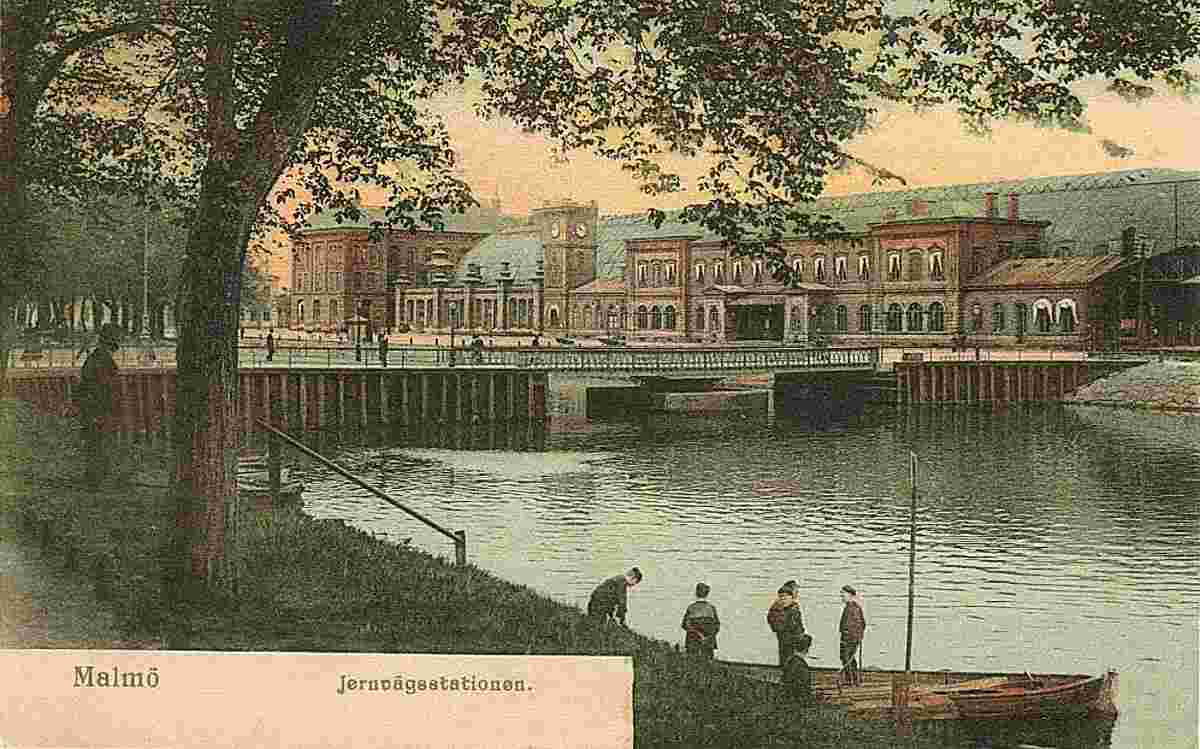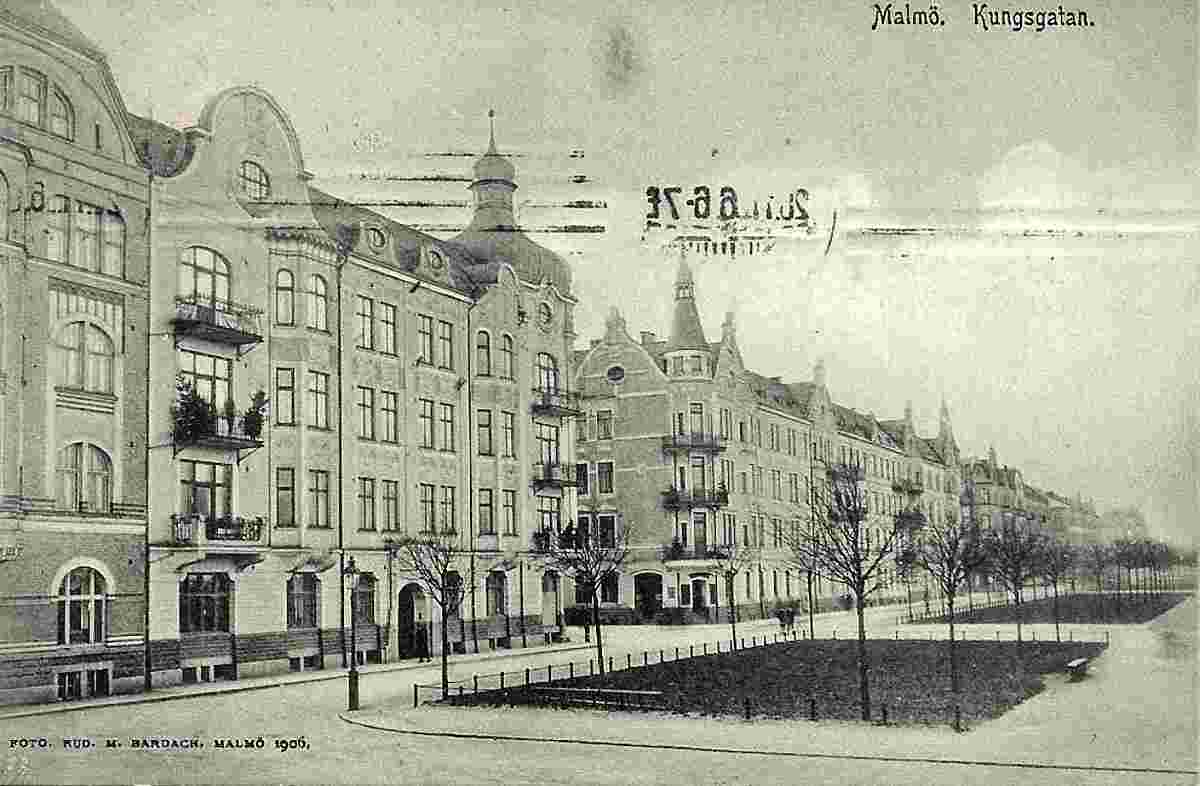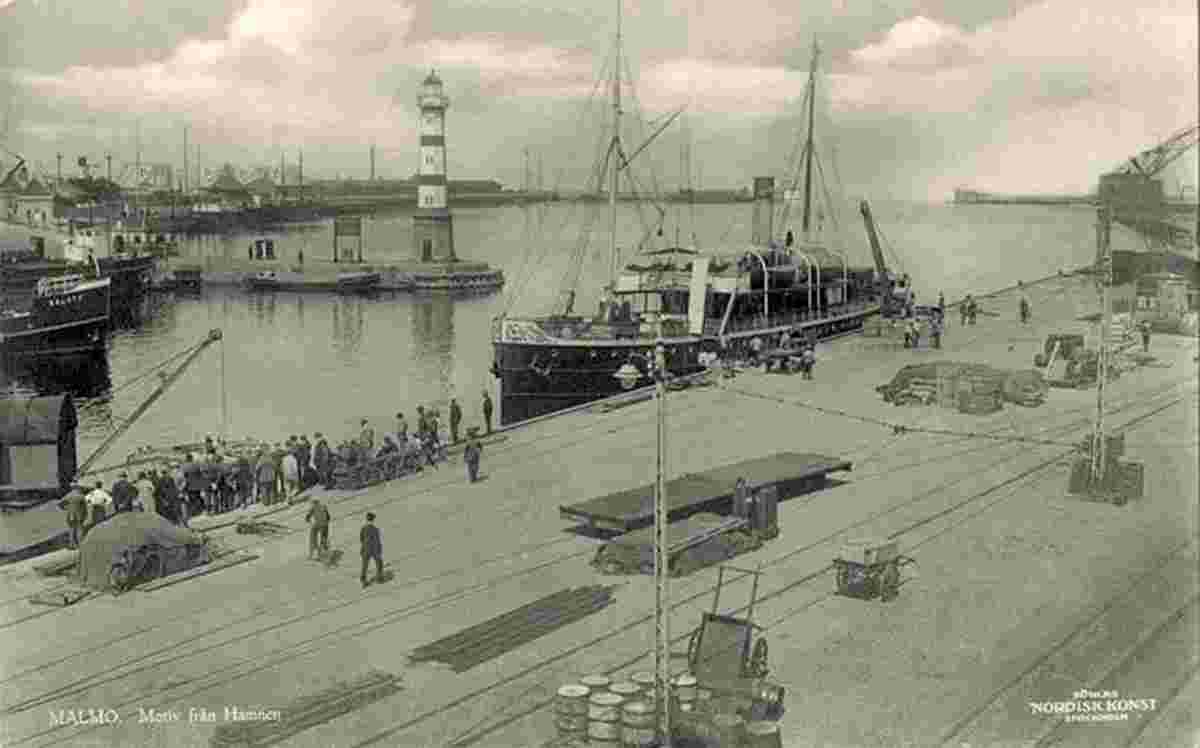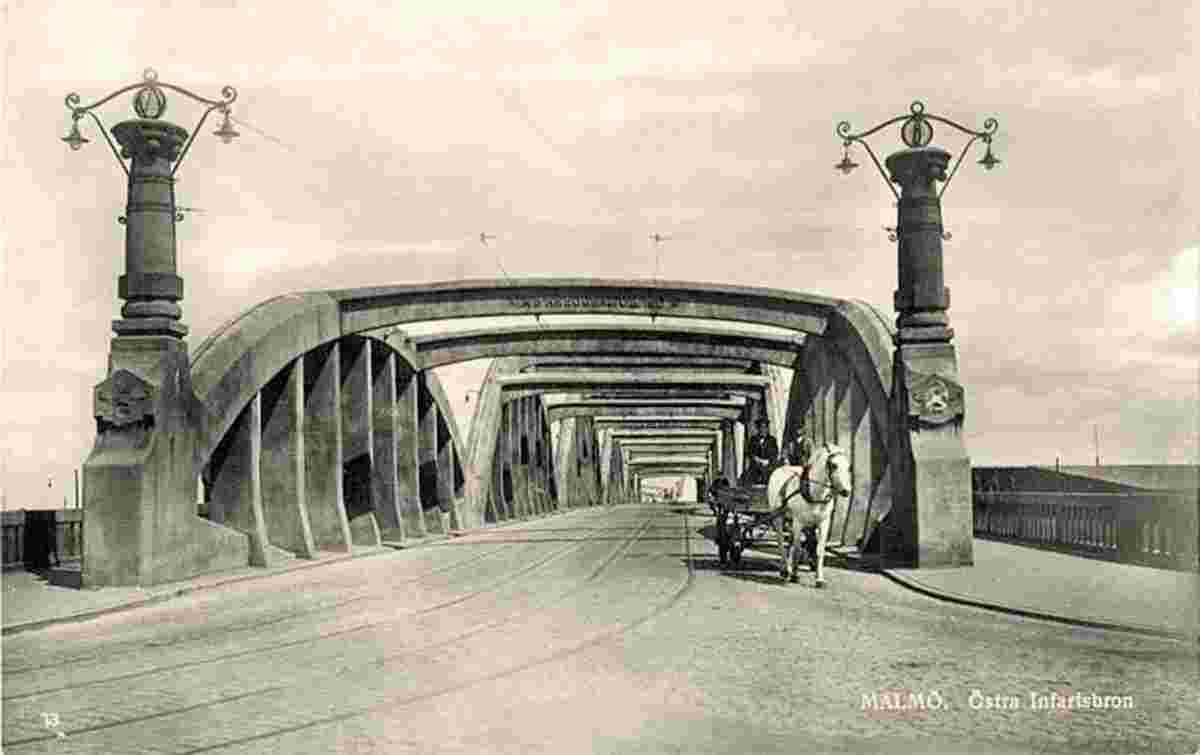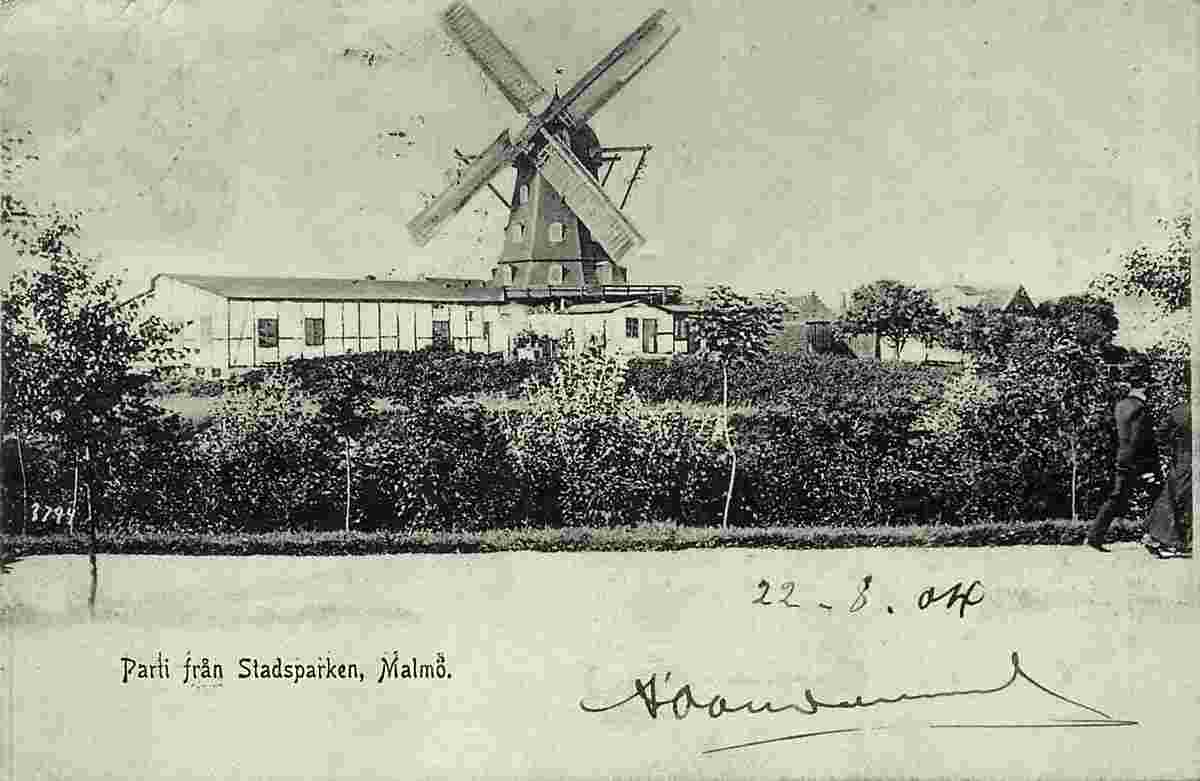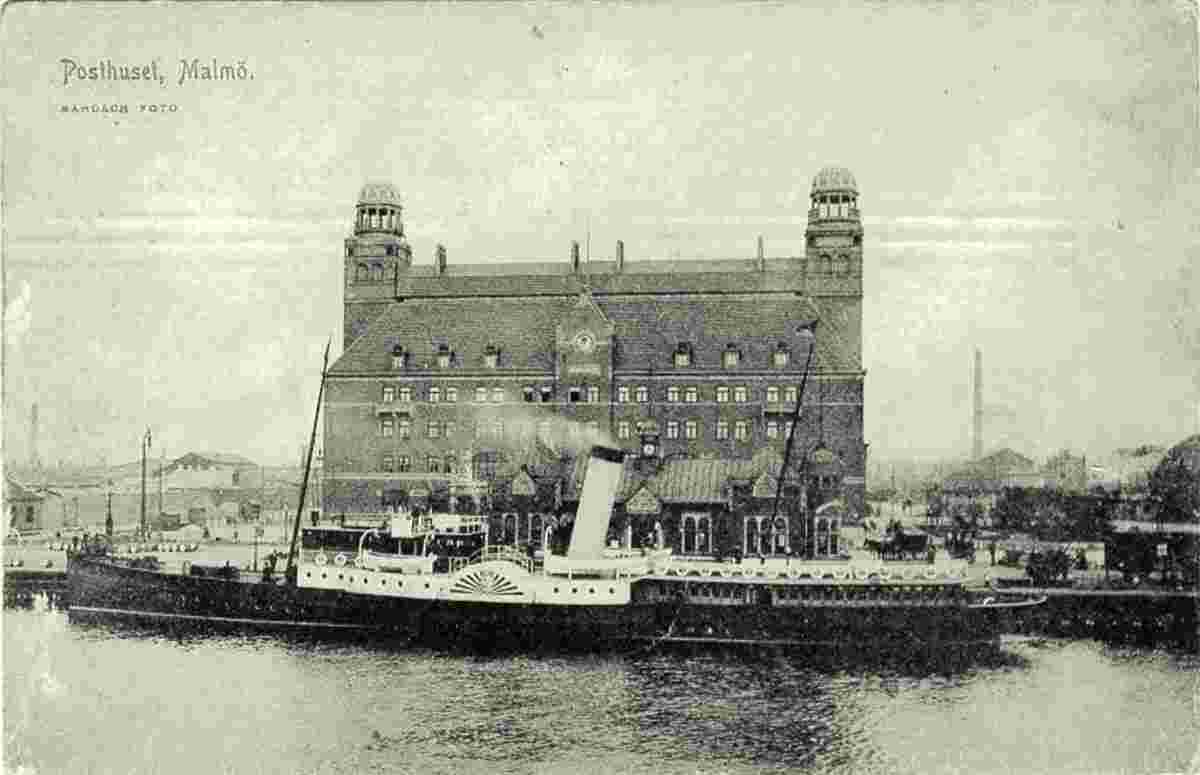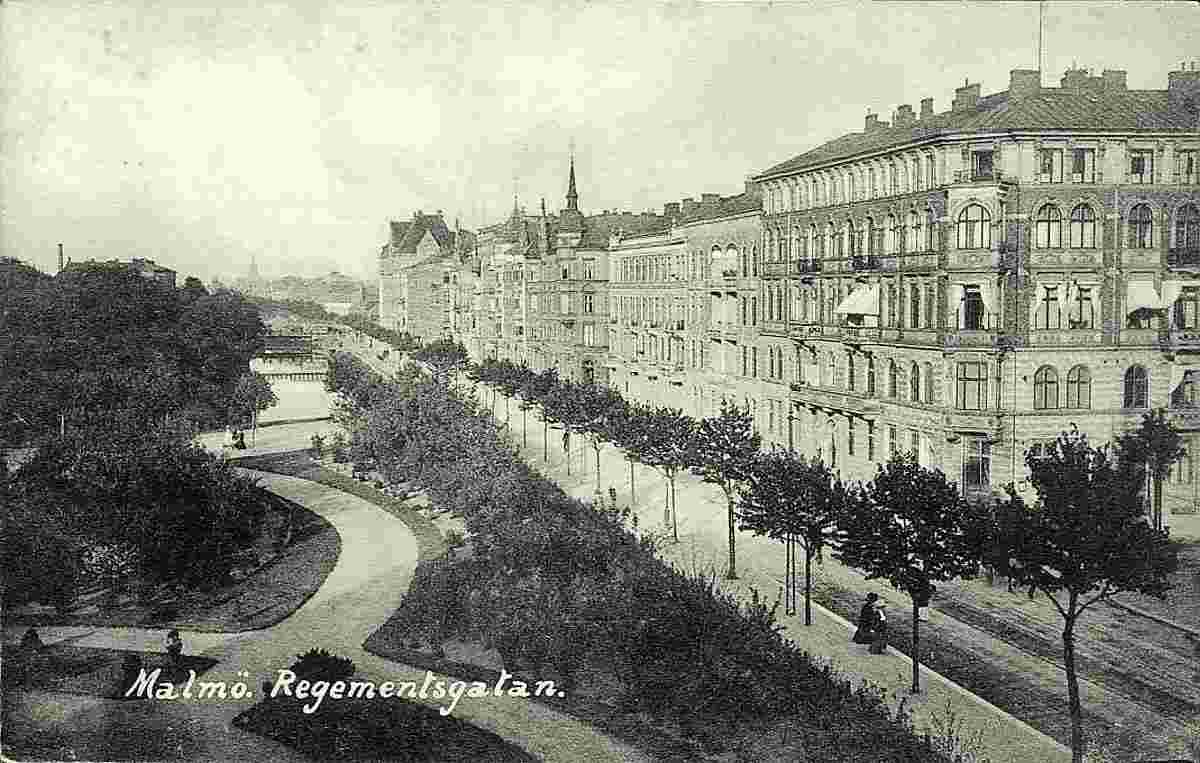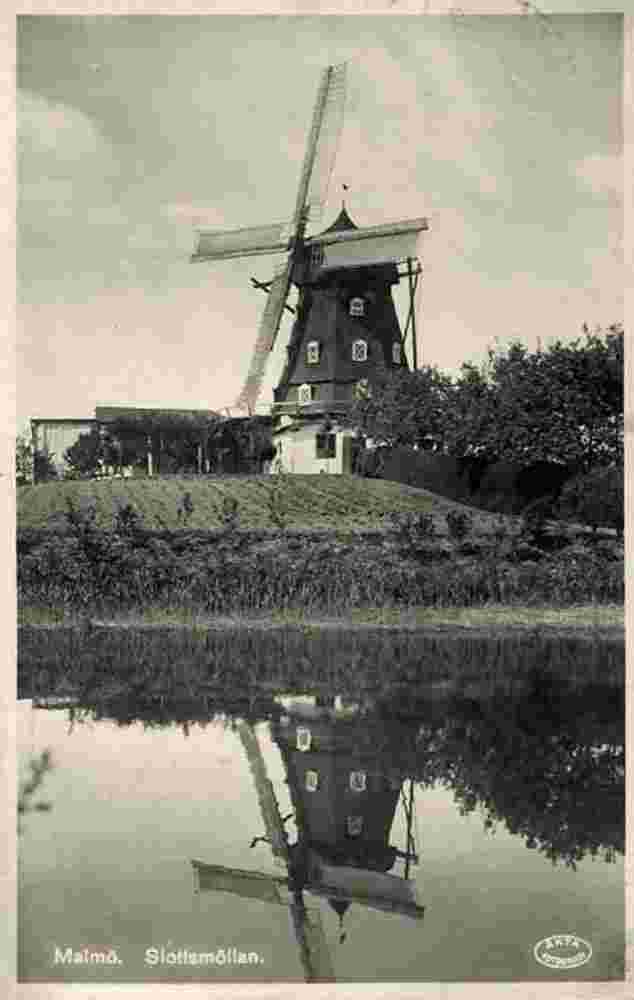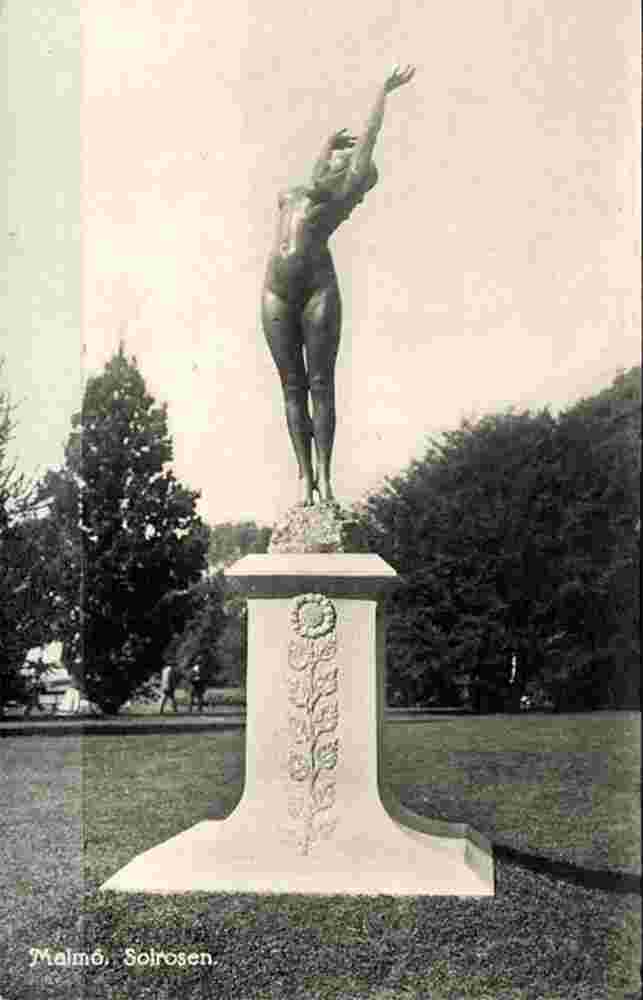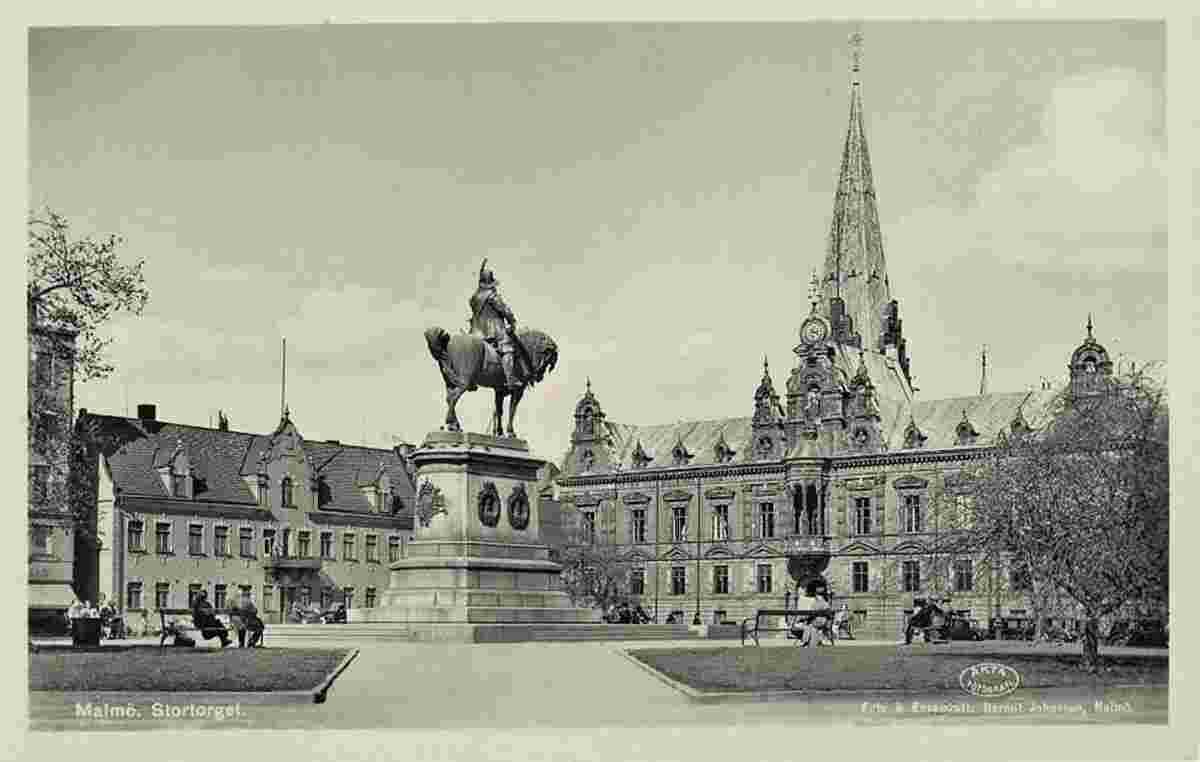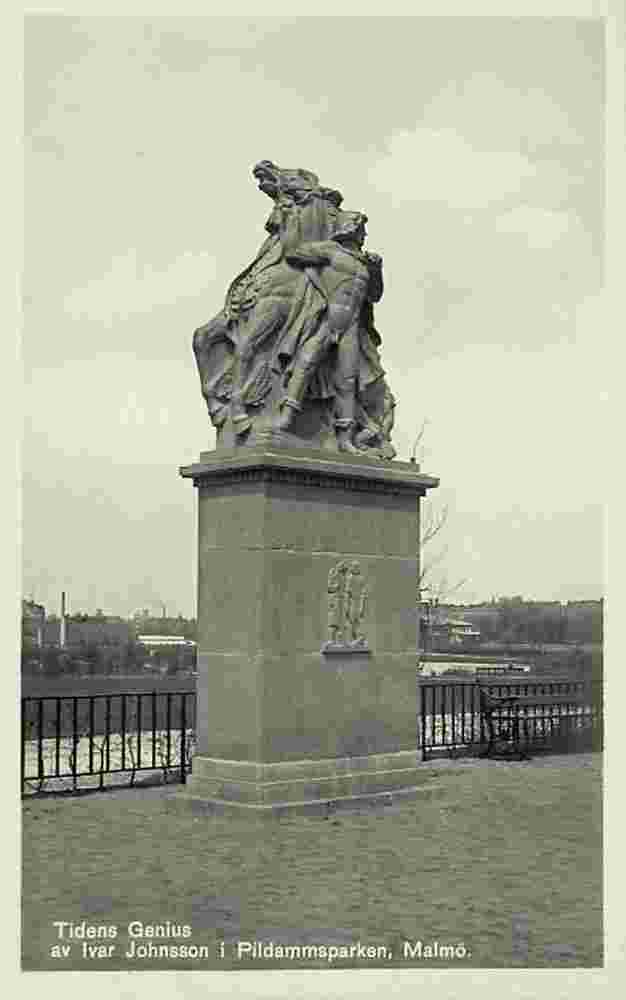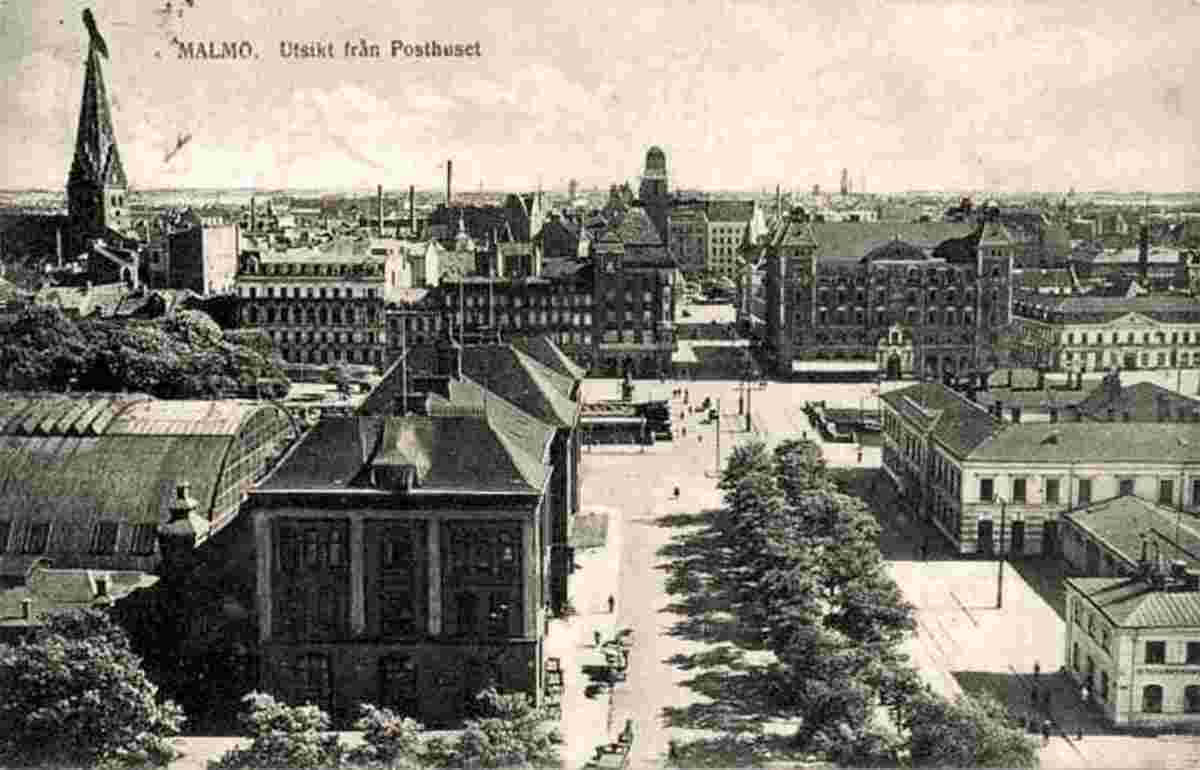Historical and old photos of Malmö, Scania
HistoryThe earliest written mention of Malmö as a city dates from 1275. It is thought to have been founded shortly before that date, as a fortified quay or ferry berth of the Archbishop of Lund, some 20 kilometres (12 miles) to the north-east. Malmö was for centuries Denmark's second-biggest city. Its original name was Malmhaug (with alternate spellings), meaning "Gravel pile" or "Ore Hill". In the 15th century, Malmö became one of Denmark's largest and most visited cities, reaching a population of approximately 5,000 inhabitants. It became the most important city around the Øresund, with the German Hanseatic League frequenting it as a marketplace, and was notable for its flourishing herring fishery. In 1437, King Eric of Pomerania (King of Denmark from 1396 to 1439) granted the city's arms: argent with a griffin gules, based on Eric's arms from Pomerania. The griffin's head as a symbol of Malmö extended to the entire province of Scania from 1660. In 1434, a new citadel was constructed at the beach south of the town. This fortress, known today as Malmöhus, did not take its current form until the mid-16th century. Several other fortifications were constructed, making Malmö Sweden's most fortified city, but only Malmöhus remains. Lutheran teachings spread during the 16th century Protestant Reformation, and Malmö became one of the first cities in Scandinavia to fully convert (1527–1529) to this Protestant denomination. In the 17th century, Malmö and the Scanian region (Skåneland) came under control of Sweden following the Treaty of Roskilde with Denmark, signed in 1658. Fighting continued, however; in June 1677, 14,000 Danish troops laid siege to Malmö for a month, but were unable to defeat the Swedish troops holding it. By the dawn of the 18th century, Malmö had about 2,300 inhabitants. However, owing to the wars of Charles XII of Sweden (reigned 1697–1718) and to bubonic plague epidemics, the population dropped to 1,500 by 1727. The population did not grow much until the modern harbor was constructed in 1775. The city started to expand and the population in 1800 was 4,000. 15 years later, it had increased to 6,000. In 1840, Frans Henrik Kockum founded the workshop from which the Kockums shipyard eventually developed as one of the largest shipyards in the world. The Southern Main Line was built between 1856 and 1864; this enabled Malmö to become a center of manufacture, with major textile and mechanical industries. In 1870, Malmö overtook Norrköping to become Sweden's third-most populous city, and by 1900 Malmö had strengthened this position with 60,000 inhabitants. Malmö continued to grow through the first half of the 20th century. The population had swiftly increased to 100,000 by 1915 and to 200,000 by 1952. 1900–1969In 1914 (15 May to 4 October) Malmö hosted the Baltic Exhibition. The large park Pildammsparken was arranged and planted for this large event. The Russian part of the exhibition was never taken down, owing to the outbreak of World War I. On 18 and 19 December 1914, the Three Kings Meeting was held in Malmö. After a somewhat infected period (1905–1914), which included the dissolution of the Swedish-Norwegian Union, King Oscar II was replaced with King Håkon VII in Norway, who was the younger brother of the Danish King Christian X. As Oscar died in 1907, and his son Gustav V became the new King of Sweden, the tensions within Scandinavia were still unclear, but during this historical meeting, the Scandinavian Kings found internal understanding, as well as a common line about remaining neutral in the ongoing war. Within sports, Malmö has mostly been associated with football. IFK Malmö participated in the first ever edition of Allsvenskan 1924/25, but from the mid-1940s Malmö FF started to rise, and ever since it has been one of the most prominent clubs within Swedish football. They have won Allsvenskan 23 times in all (as of February 2018) between 1943/44 and 2017. 1970s and laterBy 1971, Malmö reached 265,000 inhabitants, but this was the peak which would stand for more than 30 years. (Svedala was, for a few years in the early 1970s, a part of Malmö municipality.) By the mid-1970s Sweden experienced a recession that hit the industrial sector especially hard; shipyards and manufacturing industries suffered, which led to high unemployment in many cities of Scania. Kockums shipyard had become a symbol of Malmö as its largest employer and, when shipbuilding ceased in 1986, confidence in the future of Malmö plummeted among politicians and the public. In addition, many middle-class families moved into one-family houses in surrounding municipalities such as Vellinge Municipality, Lomma Municipality and Staffanstorp Municipality, which profiled themselves as the suburbs of the upper-middle class. By 1985, Malmö had lost 35,000 inhabitants and was down to 229,000. The Swedish financial crises of the early 1990s exacerbated Malmö's decline as an industrial city; between 1990 and 1995 Malmö lost about 27,000 jobs and its economy was seriously strained. However, from 1994 under the leadership of the then mayor Ilmar Reepalu, the city of Malmö started to create a new economy as a center of culture and knowledge. Malmö reached bottom in 1995, but that same year marked the commencement of the massive Öresund Bridge road, railway and tunnel project, connecting it to Copenhagen and to the rail lines of Europe. The new Malmö University opened in 1998 on Kockums' former dockside. Further redevelopment of the now disused south-western harbor followed; a city architecture exposition (Bo01) was held in the area in 2001, and its buildings and villas form the core of a new city district. Designed with attractive waterfront vistas, it was intended to be and has been successful in attracting the urban middle-class. Since 1974, the Kockums Crane had been a landmark in Malmö and a symbol of the city's manufacturing industry, but in 2002 it was disassembled and moved to South Korea. In 2005, Malmö gained a new landmark with completion of Turning Torso, the tallest skyscraper in Scandinavia. Although the transformation from a city with its economic base in manufacturing has returned growth to Malmö, the new types of jobs have largely benefited the middle and upper classes. In its 2015 and 2017 reports, Police in Sweden placed the Rosengård and the Södra Sofielund/Seved district in the most severe category of urban areas with high crime rates. Origin: en.wikipedia.org | ||||||||||||
 |
Historical and old photos of Malmö, Scania
Historiska och gamla bilder från Malmö, Scania |
| Main page • Countries of Europa • Cities of Sweden |
| Robinson Rd, CB 13862 Nassau, NP, The Bahamas |
